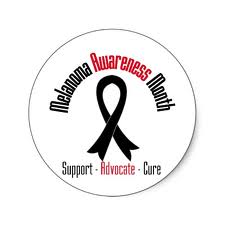May 21, 2012
How to Prevent Skin Cancer, and Why It’s So Important
 Skin cancer is a lifestyle disease, affecting young women, older men and everyone in between. One in five Americans will develop skin cancer in the course of a lifetime; 13 million Americans are living with a history of nonmelanoma skin cancer, and nearly 800,000 Americans are living with a history of melanoma, the most dangerous form of skin cancer.
Skin cancer is a lifestyle disease, affecting young women, older men and everyone in between. One in five Americans will develop skin cancer in the course of a lifetime; 13 million Americans are living with a history of nonmelanoma skin cancer, and nearly 800,000 Americans are living with a history of melanoma, the most dangerous form of skin cancer.- Seek the shade, especially between 10 AM and 4 PM when the sun is strongest. An extra rule of thumb is the “shadow rule.” If your shadow is shorter than you are, the sun’s harmful UV radiation is stronger; if your shadow is longer, UV radiation is less intense.
- Do not burn. A person’s risk for melanoma doubles if he or she has had five or more sunburns at any point in life.
- Avoid tanning and UV tanning booths. UV radiation from tanning machines is known to cause cancer in humans, and the more time a person has spent tanning indoors, the higher the risk. Those who make just four visits to a tanning salon per year can increase their risk for melanoma by 11 percent, and their risk for the two most common forms of skin cancer, basal cell carcinoma and squamous cell carcinoma, by 15 percent.
- Cover up with clothing, including a broad-brimmed hat and UV-blocking sunglasses. Clothing can be your most effective form of sun protection, so make the most of it with densely woven and bright-or dark-colored fabrics, which offer the best defense. The more skin you cover, the better, so choose long sleeves and long pants whenever possible.
- Use a broad spectrum (UVA/UVB) sunscreen with an SPF of 15 or higher every day. For extended outdoor activity, use a water-resistant, broad spectrum (UVA/UVB) sunscreen with an SPF of 30 or higher.
- Apply 1 ounce (2 tablespoons) of sunscreen to your entire body 30 minutes before going outside. Reapply every two hours or immediately after swimming or excessive sweating.
- Keep newborns out of the sun. Sunscreens may be used on babies over the age of six months, but they should also be protected by shade and clothing. Children are very sensitive to ultraviolet radiation— just one severe sunburn in childhood doubles the chances of developing melanoma later in life.
- Examine your skin head-to-toe every month. While self-exams shouldn’t replace the important annual skin exam performed by a physician, they offer the best chance of detecting the early warning signs of skin cancer. If you notice any change in an existing mole or discover a new one that looks suspicious, see a physician immediately.
- See your physician every year for a professional skin exam.

















